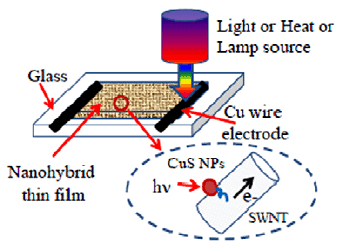
Previously, scientists have managed to devise material that can convert light into electricity, and other materials that can convert heat into electricity. Now, a group of researchers at University of Texas at Arlington have managed to create a hybrid material that can convert both forms of energy at the same time into electricity. This double spanned function gives it an edge over existing solutions, and since it’s very cheap, if the technology is improved it might even act as an alternative to conventional solar panels.
Single-walled carbon nanotubes (SWNTs) have been used in the construction of transparent solar cells and all-carbon solar cells, however when compared to conventional photovoltaic cells these are still highly inefficient. However, when also converting heat, not just light, into electricity, the resulting material becomes of novel interest.
“If we can convert both light and heat to electricity, the potential is huge for energy production,” said UT Arlington associate physics professor Wei Chen. “By increasing the number of the micro-devices on a chip, this technology might offer a new and efficient platform to complement or even replace current solar cell technology.”
The thermoelectric generator was made after the researchers combined copper sulfide nanoparticles and single-walled carbon nanotube. In lab tests, the new thin-film structure showed increases by as much at 80 percent in light absorption when compared to single-walled nanotube thin-film devices alone, making it a more efficient generator. The researchers soon plan an assembling a prototype thermoelectric generator that they hope can eventually produce milliwatts of power. The technology could be used in devices such as self-powering sensors, low-power electronic devices and implantable biomedical micro-devices.
Findings were documented in the Journal of Biomedical Nanotechnology.


